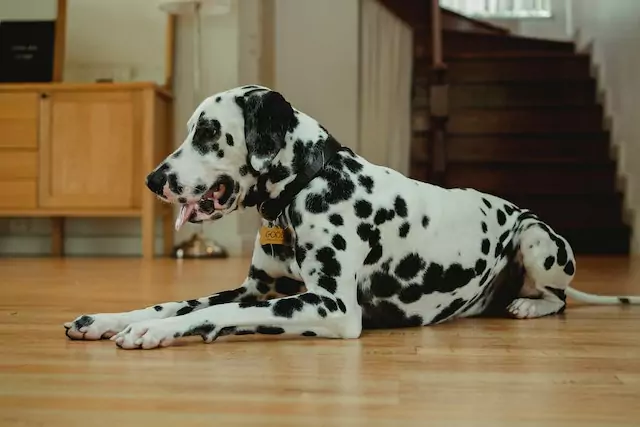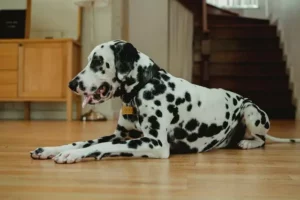0

Dog breathing fast while sleeping could be an issue for you.
Due to its short and narrowed nostrils and lengthy soft palates, your dog breathes quickly (and briefly) while sleeping. The brachycephalic dog exhibits several traits. They have trouble breathing normally. Other contributing variables include having a fever, a dream, or onion poisoning.

Overly rapid breathing is known medically as tachypnea.
Dogs with disorders of the nose, throat, mouth, lungs, or trachea may experience this. The respiratory system is made up of these body parts.
It can be difficult to determine whether your dog’s rapid breathing is normal at times. It can be an instance of enthusiasm or an underlying illness.
Choking.
Rasping or snoring
More than usual drooling
Blue or blue-purple tint to the tongue.
Stretched-out neck and side-spread elbows.
Wide open mouth with flared nostrils
Panting that is not warm or that was not the result of exertion.
Although tachypnea can affect dogs of any age or breed, brachycephalic dogs seem to experience it more frequently. Dogs with a brachycephalic face, often known as a flat face, have long soft palates and narrow nostrils.
These deviations make it challenging for air to move via the nose and throat.
These dogs are unable to properly breathe and obtain enough air into their lungs. even while they are dozing off or relaxing.
Small dog breeds may also breathe quickly at times over the course of their life.
Pugs are brachycephalic dogs.
Fun fact: A healthy canine breathes between 20 and 34 times each minute. It shouldn’t be difficult or laborious to breathe.
Your dog can be breathing rapidly because they are dreaming.
Do dogs actually dream, you ask? Dogs do not only slumber like babies; they also dream. similar to humans.
What scientists have discovered
In 2001, ground-breaking research revealed that mammals dream.
Researchers from the Massachusetts Institute of Technology carried out the study. They were the first to discover that rats dream (and I’ll explain how this relates to dogs in a moment).
They did this by setting the rats free in a maze. Then captured the rat’s brain activity on film.
Later, they captured the rats’ REM sleep-related brain activity on film.
In 44% of REM sleep episodes, the brain patterns created throughout the maze and those created while asleep were identical. This indicates that the rats may have dreamed about their experiences in the maze.
The results of this investigation led to the assumption that dogs also dream. Given that dogs’ brains have the same brain patterns as those of humans, this is true.
A dog also has sleep cycles that are comparable to those of humans. Rapid eye movement (REM), non-rapid eye movement, and wakefulness are all experienced by them (non-REM).
A 1977 lab research with 6 pointer dogs lends credence to this. Slow-wave and REM were the 2 sleep stages that the researchers found. They also distinguished between alert and sleepy wakefulness.
They discovered that dogs spend 12% of their time in REM sleep, 21% of their time tired, and 44% of their time attentive. Additionally, dogs slept for 23% of the night non-REM.
It’s simple to determine whether your dog has fallen asleep. Wait till they nod off.
Dogs typically start to experience REM slumber after 20 minutes. In 2 or 3 minutes, they enter REM sleep.
When a person’s breathing becomes shallow and erratic, they are in REM sleep. Movement is a sign that someone is dreaming.
They occasionally kick or move a paw. Frequently, their closed eyelids move to reveal their eyes.
Compared to adult dogs, puppies experience more dreams. They learn a lot since they are learning everything for the first time. They think about this information when they sleep at night.
Additionally, pups dream more often than larger dogs. Stanley Coren, a psychologist, and author on canine subjects say this.
According to Coren, the size of an animal affects both the duration and frequency of dreams. Your Chihuahua, for instance, might dream every ten minutes. Their dream might only last for a moment.
A German Shepherd, however, might dream just once every 60 to 90 minutes. But the duration of their dream can be five to ten minutes.
Have you ever had a dream about flying? or ascending a tall tree by jumping from the ground? (Hey, in dreams, everything is possible.)
However, when you are dreaming, you are soundly asleep and aren’t actually flinging your arms around.
You’re not, in other words, living out your dream. (If so, you suffer from REM sleep problems.)
That is pons’s effort. Pons is the safety element of your dreams.
It’s a region of the brain that immobilizes strong muscles when you sleep. In order to avoid climbing a tree while asleep in the middle of the night.
Pons also explains why dogs in their middle years are less likely to twitch than puppies and old canines.
Puppies still have underdeveloped pons. Senior dogs sometimes don’t respond well to it.
Researchers briefly turned off pons to better examine them. This allowed scientists to learn about dogs’ dreams and allowed canines to play out their dreams. Pointers typically aim at dream birds. Dobermans also pursue would-be burglars.
Therefore, if you notice your dog breathing quickly, they might be daydreaming about something fun. or spooky
Do you have a young dog?
Puppies’ respiratory and cardiac rates are faster than those of adult dogs. even when they are sleeping.
Here, a pet owner shared a video of his sleeping puppy breathing quickly:
It had been a puppy for one month and one week. Concerned about it was the pet parent.
In the end, I watched the video and read the comments. Many pet owners said that their puppies went through the same scenario. Some of them were terrified about it since they were worried.
However, this is quite typical and not cause for alarm.
A puppy has a lot of development to accomplish as well. Additionally, sleep might aid them throughout the developmental stage. Actually, an element of this development is rapid breathing.

The reason for your dog’s rapid breathing could be anemia.
One of the symptoms of anemia is an accelerated rate of breathing. There is also shallow breathing.
Due to the decreased supply of oxygen to the tissues, anemic dogs breathe quickly. This will be more apparent when your dog is engaged in strenuous activity.
Their bodies require more oxygen-rich blood when they work out. In order to get more oxygen into the body tissues, your dog will breathe rapidly.